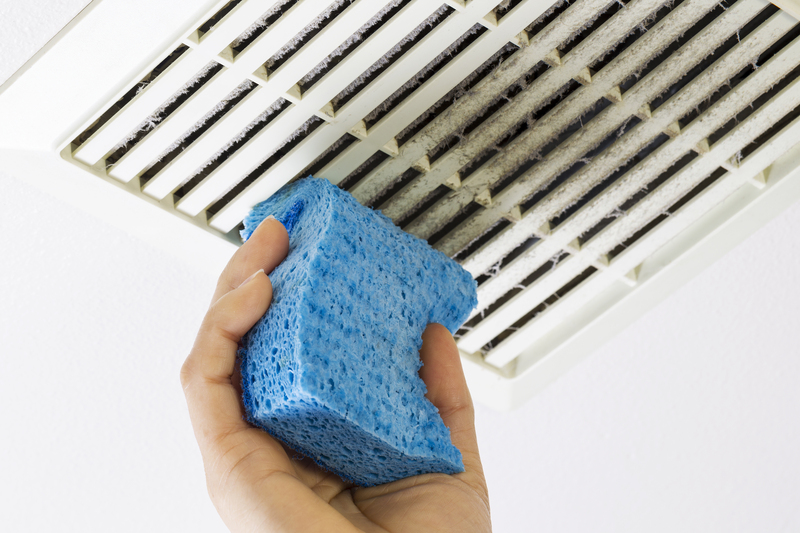In Pursuit of Cleanliness: A Mold-Free Bathroom Guide
Posted on 16/06/2025
In Pursuit of Cleanliness: A Mold-Free Bathroom Guide
Bathrooms are sanctuaries of personal care and hygiene. Unfortunately, their humid and enclosed environments make them prime breeding grounds for an unwelcome guest: mold. Ensuring a mold-free bathroom is not only essential for the longevity of your home but also for your health and wellbeing. In this comprehensive guide, we'll provide practical strategies, proven tips, and innovative solutions to help you keep your bathroom sparkling clean and completely free from mold.

Understanding the Enemy: What Is Bathroom Mold?
Mold is a type of fungus that thrives in moist, humid environments--conditions frequently found in bathrooms. Mold spores are microscopic and travel through the air, landing on damp surfaces, where they quickly multiply. While there are many species, black mold (Stachybotrys chartarum) is particularly notorious for its potential health risks.
- Common mold spots in bathrooms: Under sinks, along grout lines, in the corners of showers, around windows, and on ceilings.
- How it appears: Mold typically starts as dark spots or patches and can be fuzzy, slimy, or powdery in appearance.
- Health risks: Mold exposure can aggravate allergies, trigger asthma attacks, and cause respiratory issues, especially in vulnerable individuals.
Why Mold Loves Your Bathroom
Mold needs three things to thrive: moisture, warmth, and organic material. A bathroom, with frequent water exposure, minimal sunlight, and constant warmth, is an ideal environment. Soap scum, hair, and even skin cells offer a perfect feast for mold spores. In pursuit of bathroom cleanliness, understanding why mold grows here will empower you to eliminate it at its source.
Here's why your bathroom invites mold:
- Steam from showers creates condensation and maintains high humidity levels.
- Poor ventilation means moisture lingers in the air, allowing spores to settle and grow.
- Porous surfaces (such as grout and caulk) can absorb water and sustain fungal growth.
- Leaky plumbing leads to hidden dampness behind walls and under floors.
Signs You Have a Mold Problem in Your Bathroom
While sometimes obvious, mold can also lurk where you least expect. Identifying mold early is key to maintaining a clean, healthy, and mold-free bathroom.
- Visible dark spots on walls, ceilings, tiles, or caulking.
- Persistent musty odor even after cleaning.
- Peeling paint or wallpaper due to trapped moisture.
- Chronic allergies or respiratory issues that worsen when using the bathroom.
Effective Prevention: How to Keep Bathrooms Mold-Free
Preventing mold is easier than eliminating it. Here are expert-verified steps to maintain a mold-free bathroom over the long term:
1. Improve Bathroom Ventilation
- Install a high-quality exhaust fan and run it during and after showers for at least 15-20 minutes.
- Open windows whenever possible to allow fresh air in and let humidity out.
- Keep the door ajar during and after showers to encourage airflow.
2. Control Humidity and Moisture
- Use a hygrometer to monitor humidity, aiming for levels below 50%.
- Wipe down wet surfaces after bathing, paying particular attention to tiles, glass, and countertops.
- Use a squeegee on shower walls and doors to remove excess water.
- Repair leaks in plumbing fixtures or toilet tanks immediately.
3. Clean Regularly and Thoroughly
- Scrub tiles, grout, and caulking with a mold-inhibiting cleanser weekly.
- Wash or replace shower curtains and liners every month.
- Launder bath mats and towels regularly and hang them to dry after use.
- Disinfect garbage bins and clean under sinks where moisture gets trapped.
4. Use Mold-Resistant Products
- Invest in mold-resistant paints designed for high-moisture environments.
- Choose silicone-based caulks and sealants that include anti-mold agents.
- Opt for water-resistant building materials, such as porcelain tiles, when remodeling.
5. Organize and Declutter
- Avoid overcrowding shelves or cabinets, as clutter restricts airflow and traps moisture.
- Store toiletries in ventilated containers that allow surfaces to dry fully between uses.
Cleaning Mold: Safe, Effective Removal Tactics
If you already have mold, don't panic. Here are proven methods for removing bathroom mold and restoring a hygienic space:
1. Wear Protective Gear
- Put on gloves, goggles, and a mask to prevent contact with spores and harsh cleaning agents.
2. Use the Right Cleaning Solutions
- White vinegar: Spray full-strength white vinegar directly on mold and leave for an hour, then scrub with a brush.
- Baking soda: Mix with water to form a paste for scrubbing tiles and grout.
- Hydrogen peroxide: Safe for most bathroom surfaces--spray and leave for 10 minutes before wiping.
- Commercial mold removers: For tough infestations, use EPA-registered cleaners specifically designed for mold removal.
3. Scrub Thoroughly and Dry Completely
- Use a firm brush for tiles and grout lines.
- After cleaning, completely dry the area using fans or open windows.
- Dispose of any materials (like rags, sponges, or old grout) that may harbor spores.
4. Remove and Replace When Needed
- If mold has penetrated drywall, insulation, or caulking, remove and replace affected materials to prevent future recurrences.
Long-Term Strategies: Making Your Bathroom Permanently Mold-Free
Taking preventive measures is vital for a permanently mold-free bathroom. Here's how to future-proof your space for ultimate cleanliness:
1. Regular Maintenance Routines
- Inspect plumbing and seals monthly for leaks or moisture buildup.
- Deep-clean tiles and grout every three months using a steam cleaner or professional service.
- Keep a maintenance calendar to track cleaning and repairs.
2. Upgrade Fixtures and Finishes
- Swap out old fixtures for water-saving, leak-resistant models.
- Install a high-quality bathroom extractor fan with a humidity sensor for optimal moisture control.
- Consider heated flooring to reduce condensation build-up on tiles and grout.
3. Regrout and Reseal
- Regrout tiles every few years, using mold-resistant grout.
- Reseal around tubs, showers, and sinks to block out water and mold spores.
Eco-Friendly Solutions and Safe Practices
Embracing green cleaning is not only environmentally responsible but also safer for your household. Here's how to stay eco-conscious in your quest for a clean, mold-free bathroom:
- Use plant-based cleaning products free from harsh chemicals and artificial fragrances.
- Rely on natural mold removers like vinegar, baking soda, lemon juice, or tea tree oil.
- Mold-resistant houseplants (like peace lilies or ferns) can help absorb excess moisture and purify the air.
- Always ventilate when cleaning and avoid excessive use of bleach or other toxic substances.
When to Call a Professional
Some mold problems require expert intervention. If you notice one or more of the following signs, seek help from a certified mold remediation specialist:
- Extensive mold patches (more than 10 square feet) or recurring outbreaks.
- Mold growing inside walls or under floors.
- Serious structural damage like sagging ceilings or buckling tiles.
- Family members experiencing ongoing health issues associated with mold exposure.
Professionals use advanced diagnostics and remediation methods ensuring your bathroom becomes and stays completely mold free.

Conclusion: Elevate Your Cleanliness Standards
In pursuit of cleanliness, establishing a meticulous cleaning routine, fixing sources of moisture, and making smart material choices can ensure your bathroom remains healthy, inviting, and mold-free for years to come. Not only will you be safeguarding your family's health, but you'll also be maintaining the value and beauty of your home.
Remember: A mold-free bathroom is a reflection of your commitment to cleanliness, comfort, and care for everyone who walks in. Use this guide to transform your bathroom into a haven of hygiene--where mold has no place to hide.
FAQs on Keeping Your Bathroom Mold-Free
- What is the best cleaner for bathroom mold? White vinegar is effective for most types, but hydrogen peroxide or commercial mold removers can tackle tougher patches.
- How often should I clean my bathroom to prevent mold? Aim for weekly cleans, with deeper scrubbing and inspection every few months.
- Can mold in the bathroom make you sick? Yes, especially for people with allergies or asthma. Immediate removal and prevention are vital for health.
- Is bleach the best solution for bathroom mold? Bleach works on non-porous surfaces but isn't effective on grout or porous materials -- plus, it gives off strong fumes. Use safer alternatives where possible.
With the right knowledge and tools, you're well equipped in the pursuit of bathroom cleanliness. A mold-free sanctuary awaits!





